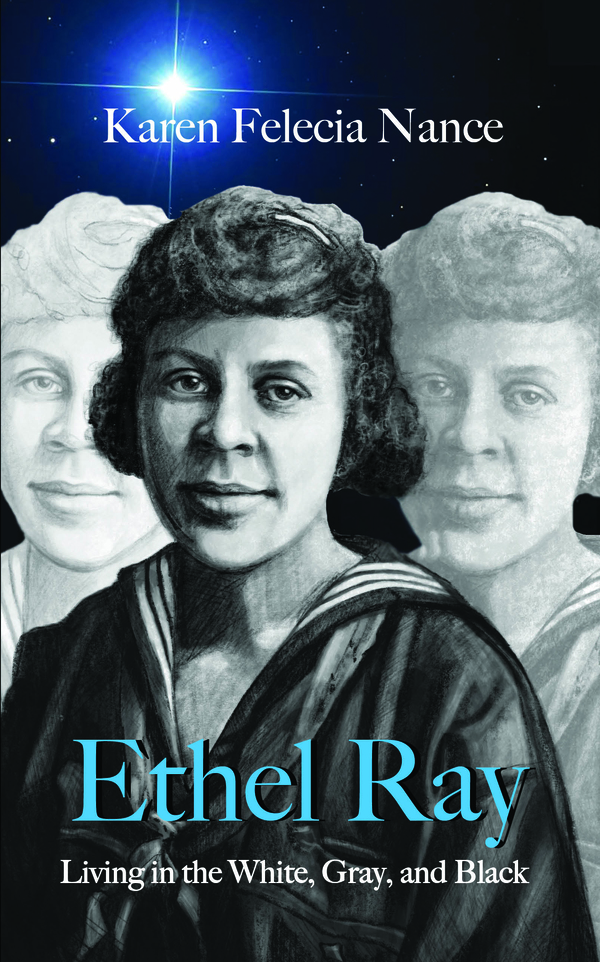Growing up, Karen F. Nance knew her grandmother, Ethel Ray Nance, as caring, kind and full of love for her grandchildren, opting always to talk about their lives over her own. After Ethel Ray was admitted to a nursing home at the age of 90, she gifted Karen a collection of her writings
about her life. After reading these pages Karen realized what an accomplished and trailblazing woman her grandmother was and set out to write a book to chronicle Ethel Ray’s experiences.
Almost thirty years later, “Ethel Ray: Living in the White, Gray and Black” is set to be published by In Black Ink on April 15 Following the early life of Ethel Ray in the 1900s as she navigated racial injustice in Duluth, Minn, the book depicts the hardships that she and her siblings faced during their childhood in a predominantly white city, their search for identity and her family’s experience living in the city during the Duluth Lynchings of 1920. Told through a combination of journal entries, prose and poetry, this story tells the formative beginnings of a Ethel Ray, a woman who went on to become a pivotal figure of the NAACP, close friend and confidant of W.E.B Du Bois and the first BIPOC woman to hold a position in the Minnesota Legislature.
“I see myself as walking in her footsteps,” Karen said, reflecting on what she has learned about herself during the process of writing the book. “I feel like I could never fill her shoes.”
Karen’s track record proves otherwise. Beyond her work as a writer, she has worked as an attorney in criminal defense and child support law, an advocate for folks with special needs and a licensed private investigator just to name a few.
“What I think of when I think about [Ethel Ray] is that she opened the door. She exposed me to a lot of wonderful people she was working with,” Karen said.
“It would have been great to interview her, but she was all about her grandchildren and what they wanted to accomplish and being supportive of that. I learned that you can accomplish anything; she never finished college until her 80s, so [she provides] a lot of motivation that you can do anything at any age. Clearly, she was inspirational to me and continues to be so.”
Not only was writing this book a journey of self discovery for Karen, but it also brought her closer with her family. Stories and historical artifacts from family members were a primary source during this process, giving the Nance family an opportunity to bond over their memories of Ethel Ray.
“When [my father] passed, I got very close to my uncle Glenn Nance, and he had a wealth of information,” Karen said. “When she passed, my uncle got most of the papers. He would tell me stories, and he gave me books from his grandfather, William Henry Ray, so that’s really what ignited the information — he had probably 10 times as much information as I had.” The publishing of the book will literally bring her family together as seven relatives travel to Minnesota this month, many of whom have never been to the state.
“Out of the eight of us, five of us were alive when [Ethel Ray] was alive, so we have our own stories about her and our [own] experiences,” Karen said. “She lived to be 93 years old, so we’re really blessed to have had her for so long. If she was here, it would be her 120th birthday on April 13.”
Alongside her book tour in Ethel Ray’s home city of Duluth, Karen will be attending two events in the Twin Cities to promote her new book. The first of which will be hosted by Macalester’s very own English department during their coffee house and literary salon on Wednesday April 17 from 4:30 to 6:30 p.m. In addition to Karen, Lenny Prater ’23, a recent Mac alum and co-editor for the book, will be in attendance.
The second event will be at the Capri in Minneapolis on April 18 between 6:00 and 7:30 p.m. hosted by Lissa Jones, the host of podcast Black Market Reads. Free and open to the public, this event will include food, discussion and book signing.
Look out for “Ethel Ray: Living in the White, Gray and Black” in bookstores near you, and be sure to stop by the English department’s coffee house next week to hear more about this riveting and little known story ingrained in Minnesotan history.








